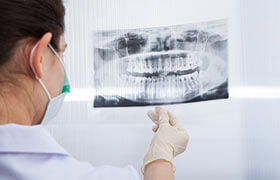Extractions: a guide from our dentist
When you need to have a tooth removed, you can rest assured that you aren’t the only person who pictures the piece-of-string-tied-to-a-doorknob technique! 
Luckily, there are many ways to extract teeth, along with many different reasons as to why this option may be considered, so it should be a comfortable experience.
At Walkerston Dental, our dentist Walkerston will always aim to answer any questions or concerns that you may have about dental extraction, so if you have any, simply ask us!
In this introductory guide, our dentist Walkerston explores dental extractions in a bit more depth, so you will know what to expect.
Reasons for dental extractions
There are a few common reasons why our dentist Walkerston may decide to remove a tooth.
Perhaps you have been in an accident, and the tooth is too badly damaged to be repaired with a crown or filling. You may be suffering from extensive decay or a dental infection, and the tooth is too deteriorated by decay to save.
Or, you may be about to undertake a brace or aligner, and our team needs to make some room in your mouth.
Simple extractions
A simple extraction occurs when a completely healthy tooth is removed from the jaw. This is often required when you are about to undertake orthodontic work, and our team needs to make room for the tooth movement.
We will numb the area and simply remove the tooth from your mouth with dental forceps. Unless multiple teeth need to be removed next to each other, we will usually leave a simple extraction site open to heal on its own.
Surgical extractions
As the name suggests, surgical extractions require a bit of a surgical approach to removing the tooth.
This can be due to several reasons; the tooth may be broken at the gum line, it may be shattered under the gums due to trauma, or it may be impacted. In any case, we will usually begin by numbing the area and then using incisions to gain access underneath the gum.
We will use the same basic tools as used in a simple extraction, but there may be an x-ray post-extraction, so we can ensure that all of the tooth fragments have been removed.
In most cases relating to surgical extractions, we will also stitch the gum to promote faster healing.
Wisdom teeth
When it comes to wisdom teeth, they can be pesky! And when it comes to removing them, it is rarely straightforward; they often erupt at odd angles, pushing against the underside of neighbouring teeth or they have tangled roots, which can make them harder to extract.
We will perform x-rays to determine the best way to remove your wisdom teeth, but in most cases, the removal will likely need to be surgical and have stitches.
Aftercare
Whether you have had a tooth removed to make room for orthodontic treatment or extract a wisdom tooth, for the next few days, you will need to be careful.
Even if you have had stitches, you will need to keep the site of the extraction clean, so we advise rinsing the area with saltwater. Do not brush the area directly for a few days, as you may prevent a necessary clot from forming in the socket, which can lead to a dry socket.
DISCLAIMER
All treatment carries risks. Individual consultation is required with one of our practitioners to ensure that the treatment is right for you.





